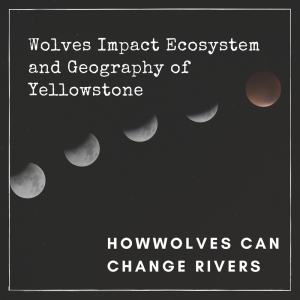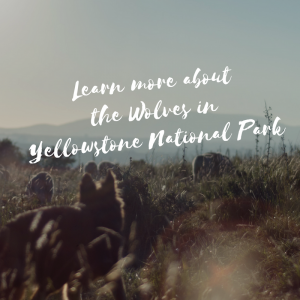In 1995, Yellowstone brought the wolves back to the park. After 70 years without wolves, the reintroduction caused unanticipated change in Yellowstone’s ecosystem and even its physical geography. The process of change starting from the top of the food chain and flowing through to the bottom is called trophic cascades. According to Yellowstone National Park, here are a few ways the wolves have reshaped the park:
Deer: It’s true that wolves kill deer, diminishing their population, but wolves also change the deer’s behavior. When threatened by wolves, deer don’t graze as much and move around more, aerating the soil.
Grass and Trees: As a result of the deer’s changed eating habits, the grassy valleys regenerated. Trees in the park grew to as much as five times their previous height in only six years!
Birds and Bears: These new and bigger trees provide a place for songbirds to live and grew berries for bears to eat. The healthier bear population then killed more elk, contributing to the cycle the wolves started.
Beavers and other animals: Trees and vegetation also allowed beaver populations to flourish. Their dam building habits provided habitats for muskrats, amphibians, ducks, fish, reptiles, and otters.
Mammals: Wolves also kill coyotes, thereby increasing the populations of rabbits and mice. This creates a larger food source for hawks, weasels, foxes, and badgers.
Scavengers: Ravens and bald eagles fed off of larger mammal’s kills.
Most surprisingly, the land: Soil erosion had caused much more variation in the path of the river. But with elk on the run and more vegetation growing next to rivers, the river banks stabilized. Now, the wolves have changed Yellowstone’s physical geography.
The story of wolf reintroduction demonstrates how crucial every member of an ecosystem is important to a landscape.



Find Us On Social Media!